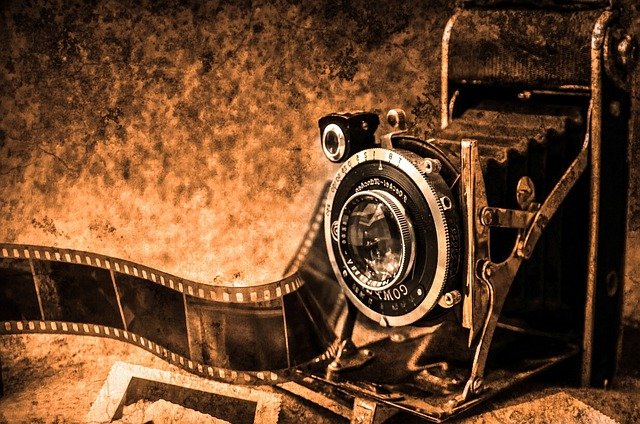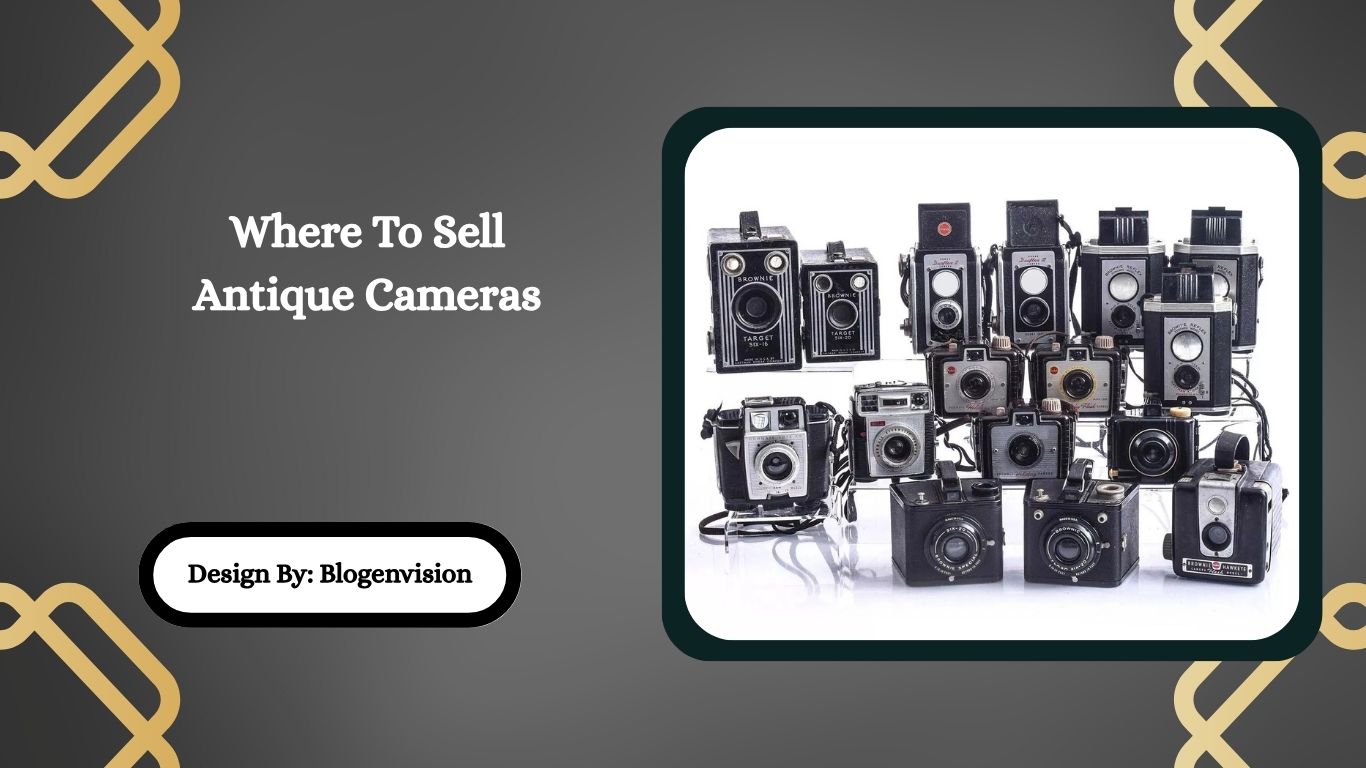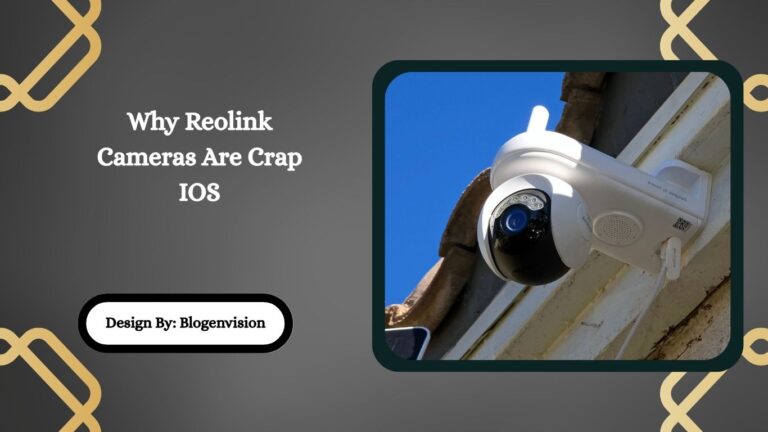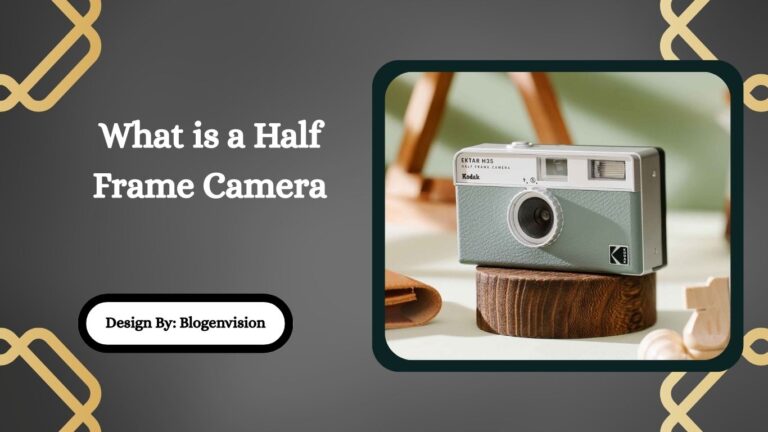Where To Sell Antique Cameras – Top Marketplaces, Tips & Valuation Guide!
You can sell antique cameras online via eBay, Etsy, KEH, or collector forums, or locally through antique shops or Facebook. Accurate listings, good photos, and fair pricing attract serious buyers.
Antique cameras aren’t just relics of the past — they’re prized collectibles with value among photographers, collectors, and vintage enthusiasts. Whether you inherited a vintage Leica, found a classic Polaroid in storage, or stumbled upon a century-old Kodak in a flea market, knowing where to sell antique cameras can make a big difference in how much money you earn.
This guide covers the best places to sell antique cameras, how to determine their value, tips to attract serious buyers, and how to avoid common selling pitfalls.
Understanding the Value of Antique Cameras
Before choosing a marketplace, it’s important to understand what makes an antique camera valuable:
Factors That Affect Value:
- Brand & Model: Leica, Hasselblad, Rolleiflex, and early Kodak models are often high-value.
- Rarity: Limited edition or discontinued models fetch higher prices.
- Age & Era: Cameras from the early 1900s or wartime periods may have historical value.
- Condition: Functionality, cosmetics, and presence of original accessories (lens caps, manuals, boxes) affect pricing.
- Film Type: Medium format, large format, and plate cameras often appeal more to collectors than 35mm.
Get your camera appraised if you suspect it’s rare or valuable. Now, let’s explore your selling options.
Local Antique Stores & Vintage Shops

Antique dealers often look for rare or visually interesting cameras to resell. If your camera is decorative or collectible, this could be an easy sale.
Pros:
- Immediate payment
- No shipping needed
- Can negotiate directly
Cons:
- May offer less than online market value
- Limited buyer knowledge on specific camera models
Pro Tip:
Bring detailed information about the camera’s model, age, and any history to support a higher price.
eBay – The Largest Global Marketplace
eBay is still one of the top places to sell antique cameras, especially if you’re targeting collectors or photographers worldwide.
Pros:
- Huge audience of camera buyers
- Auction or fixed-price options
- Global shipping expands your reach
Cons:
- Selling fees apply (around 13% of final sale)
- Requires detailed listings and photos
- Risk of returns or disputes
Pro Tip:
Use keywords like “vintage,” “rare,” “working,” or “collector’s item” in your title. Include high-resolution photos from every angle, including the serial number.
KEH Camera – Trusted Buyer of Used Gear
KEH Camera specializes in buying used and vintage cameras. You can get a quote online by entering your camera’s details.
Pros:
- Easy process with prepaid shipping
- Trusted by photography professionals
- No need to deal with buyers directly
Cons:
- Offer may be below collector market value
- Only accepts gear in salable condition
Pro Tip:
Check KEH’s “Sell” tab and compare your model’s price with eBay or collector forums for best value judgment.
Etsy – For Decorative & Collectible Cameras
Etsy is a great place to sell aesthetic, functional, or decorative antique cameras. Many buyers use them for display or vintage-themed decor.
Pros:
- Large community of vintage lovers
- Strong visual platform for product appeal
- Buyers often pay a premium for design
Cons:
- Less likely to attract serious photographers
- 6.5% transaction fee + listing fees
Pro Tip:
Emphasize the visual style, retro appeal, and home décor potential of your antique camera.
Facebook Marketplace & Buy/Sell Groups
Selling locally on Facebook Marketplace or niche vintage camera groups can be a great way to avoid fees and get quick sales.
Pros:
- No selling or listing fees
- Easy local transactions
- Access to niche camera groups
Cons:
- Must handle pricing and negotiations
- Risk of no-shows or scams
Pro Tip:
Join Facebook Groups like “Vintage Camera Collectors” or “Film Camera Swap” for access to more serious buyers.
Online Forums & Collector Communities
Dedicated forums like Photrio, RangefinderForum, and Large Format Photography Forum attract passionate buyers and knowledgeable sellers.
Pros:
- Community of serious collectors
- Often better pricing than mass marketplaces
- Trade and barter options available
Cons:
- Requires account creation and forum etiquette
- Slower selling process
Pro Tip:
Be descriptive in your posts — list condition, shutter speeds, optics quality, and any known issues. Include well-lit photos and a fair asking price.
Camera Shops & Trade Shows
Some local camera stores or vintage photography expos buy or consign antique cameras. These places often have appraisal expertise.
Pros:
- Trusted environment
- Expert appraisal on-site
- Networking with photography enthusiasts
Cons:
- May take a commission if consigned
- Limited store hours and availability
Pro Tip:
Look for events like photography swap meets or camera fairs in your region, especially in major cities.
Tips for Successfully Selling Antique Cameras

1. Clean the Camera (Gently)
Wipe down exterior dust, but don’t attempt to open or repair it unless you’re experienced — this could reduce its value.
2. Take High-Quality Photos
Include multiple angles: front, back, lens, top plate, film compartment, serial numbers, and any damage.
3. Write a Detailed Description
Include the brand, model, approximate year, lens type, functionality, accessories, and whether it’s been tested.
4. Price Competitively
Search similar sold listings on eBay or Etsy. Condition matters—mint or working units sell for more.
5. Be Honest About Condition
Buyers appreciate transparency. Mention any flaws like stuck shutters, missing knobs, or haze in the lens.
How Much Can You Sell an Antique Camera For?
Here’s a rough estimate of what some popular antique camera types can fetch:
| Camera Type | Average Price Range (USD) |
| Kodak Folding Cameras | $40 – $150 |
| Rolleiflex TLR | $250 – $900+ |
| Leica M Series (vintage) | $700 – $3,000+ |
| Polaroid SX-70 | $100 – $300 |
| Hasselblad Medium Format | $600 – $2,000+ |
Prices depend heavily on condition, rarity, and included accessories.
Scams to Avoid When Selling Antique Cameras
- Overpayment scams: A buyer sends a check over your asking price and asks for a refund.
- Shipping chargebacks: The buyer claims the item never arrived.
- “Testing” buyers: Scammers who ask to “test” the camera for free before buying.
Always use trusted platforms and track shipments with insurance.
FAQs
1: Can I sell broken antique cameras?
Yes, many collectors and artists buy non-working cameras for parts or decoration. Be honest in your listing and label it clearly as “for parts” or “non-working condition.”
2: What’s the best place for rare or collectible models?
Rare models are best sold on eBay, collector forums, or to specialized vintage camera dealers who recognize their true value. These platforms offer higher chances of finding niche buyers willing to pay a premium.
3: Do antique cameras need to work to be valuable?
Not necessarily. Some antique cameras are valuable for their historical significance, design, or brand name even if non-functional. However, working models generally sell for more than non-functional ones.
4: How do I find my camera’s model and year?
Check for engraved serial numbers, model names, or manufacturer’s labels on the camera body. You can also search photo databases, collector guides, or forums using visual characteristics.
5: Should I sell cameras individually or as a collection?
If cameras are valuable individually, selling them separately often yields higher returns. But if they’re low-value or share accessories, bundling can be more convenient and appealing to certain buyers.
Conclusion
Selling antique cameras can be both rewarding and profitable if done correctly. Whether you choose online marketplaces like eBay or Etsy, local antique stores, or camera collector forums, understanding your camera’s value is key. Provide detailed listings, clear photos, and fair pricing to attract serious buyers. Always research the platform and avoid scams. With the right approach, your old camera can find new life in the hands of a collector or enthusiast — and put money in your pocket in the process.







